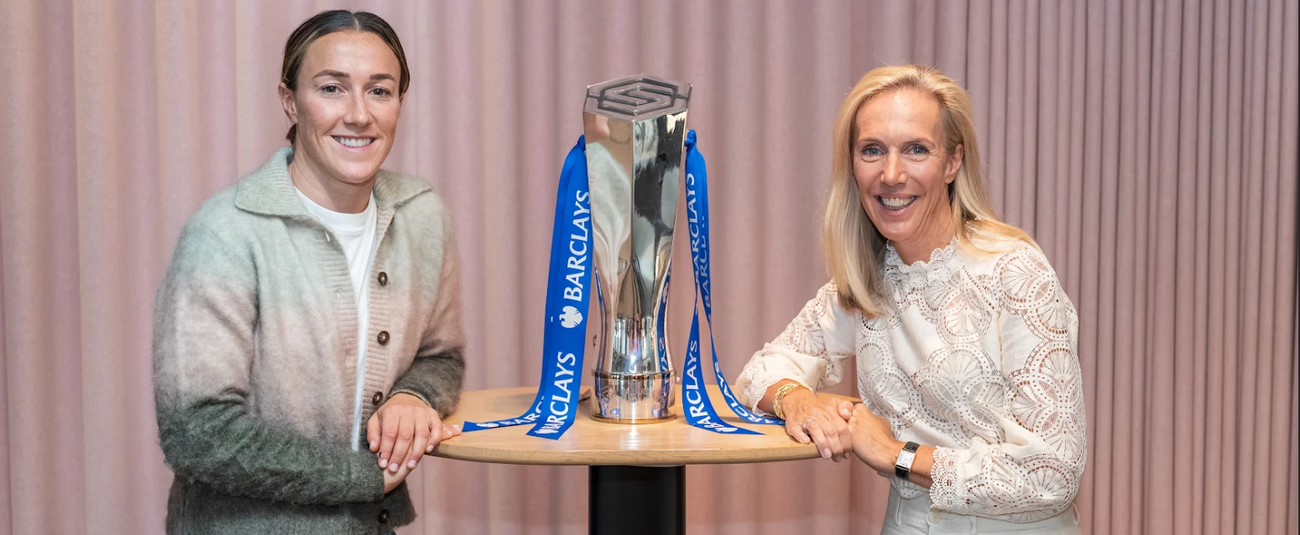Tools & Platforms
Understanding Orderly and Disorderly Behavior in 2D Nanomaterials Could Enable Bespoke Design, Tailored by AI

Researchers from Drexel, Purdue University, Vanderbilt University, the University of Pennsylvania, Argonne National Laboratory and the Institute of Microelectronics and Photonics in Warsaw, Poland have made a discovery about MXene nanomaterials that could lay the groundwork for using AI technology to boost their future development. (Credit: Devynn Leatherman-May, Brian C. Wyatt and Babak Anasori, Purdue University)
Since their discovery at Drexel University in 2011, MXenes — a family of nanomaterials with unique properties of durability, conductivity and filtration, among many others — has become the largest known and fastest growing family of two-dimensional nanomaterials, with more than 50 unique MXene materials discovered to date. Experimentally synthesizing them and testing the physical properties of each material has been the labor of tens of thousands of scientists from more than 100 countries. But a recent discovery by a multi-university collaboration of researchers, led by Drexel University researcher Yury Gogotsi, PhD, and Drexel alumnus Babak Anasori, PhD, who is now an associate professor at Purdue University, that sheds light on the thermodynamics undergirding the materials’ unique structure and behavior, could be the key to supercharging this endeavor with artificial intelligence technology. The discovery was recently reported in the journal Science.
The paper, “Order to disorder transition due to entropy in layered 2D carbides,” lays out the foundational parameters governing how the atoms in layered nanomaterials are naturally assembled — looking specifically at how the thermodynamic forces that describe energy disbursal (enthalpy) and disordering of atoms within materials (entropy) apply to interactions between the atom-thick layers that make up MXenes.
Synthesizing MXene materials has been an iterative process of experimentation and verification over nearly a decade and a half since they were first discovered. The materials glean their multitude of properties from the combination of atom-thick layers of which they’re composed. Slight changes in the chemistry or sequence of layers produces an entirely new MXene, typically with an entirely new set of physical properties.
Due to the complexity of the chemical interactions within the layers of MXenes, the march toward new discoveries has proceeded in small-but-significant increments. According to Gogotsi, distinguished university and Bach professor in Drexel’s College of Engineering, who was one of the lead investigators of the research along with partners from Purdue University, Vanderbilt University, the University of Pennsylvania, Argonne National Laboratory and the Institute of Microelectronics and Photonics in Warsaw, Poland, this breakthrough will not only direct the focus of future inquiries, but it could also allow researchers to avail themselves of high-powered computing and AI technology to take some bigger steps.
“This is exactly where AI will become an enabling technology,” Anasori said. “Guidance from computational science, machine learning and AI will be crucial for navigating the infinite sea of new materials, guiding their development and helping to select the structures and compositions with required properties for specific technologies. I look at this work as opening new avenues in the atomistic design of materials.”
While researchers have used machine learning and computer modeling for decades to posit and discover new materials, recent breakthroughs in microchip technology have taken the predictive capabilities of AI to a new level.
It’s potential for materials science research though apparent — given its complexity and the preponderance of experimental data — has yet to be fully realized. According to Gogotsi, this is due in part to insufficient research on the chemical behavior of the new materials, which is required to train the AI programs and provide the framework needed to harness their predictive power.
“Much of our research thus far has focused on theoretical design, synthesis and testing MXenes to prove their potential in an array of useful applications,” Gogotsi said. “But to capitalize on the exciting potential of AI technology, we need to retrace our steps and explain the electrochemical forces that created these materials and the structures that give them their physical properties.”
To arrive at its finding, the team synthesized 40 MXene materials, 30 of them new, with varying numbers of layers and metals in each — up to nine different metallic elements in a lattice — to observe variations in atomic structure created by the addition of new elements. Shifts in how atoms fall into order within the material structure serve as indicators of the presiding thermodynamic forces.
By first making a theoretical calculation of their atomic structure, then physically examining each of the materials, layer by layer, using dynamic secondary ion mass spectrometry (SIMS), the researchers observed that MAX phases containing up to six different metals tended toward an orderly, predictable arrangement (enthalpic preference), while those containing seven or more metals demonstrated no such preference or a tendency toward perfectly random mixing of atoms (entropic stabilization).
They also observed how electrical resistance and infrared radiation penetration varied between materials as layers — and number of different metals in the structure — increased, an indication of how the material disbursed energy internally due to its atomic structure. These observations allow the researchers to formulate a principle for making both MXenes and their parent materials, MAX phases, with perfectly mixed atomic structures.
“This study indicates that short-range ordering — the arrangement of atoms over a short distance of a few atomic diameters — in high-entropy materials determines the impact of entropy vs. enthalpy on their structures and properties,” said Brian Wyatt, PhD, a postdoctoral researcher at Purdue and first author of the paper. “For the broad scientific community, this work represents major progress in understanding the role of enthalpy and entropy in the formation and order-disorder transitions in these high-entropy materials. Within layered ceramics and 2D material research, this expands the families of these materials and their potential applications.”
Training AI programs with this data to predict whether certain materials could be stably synthesized and tailored for specific technologies is an exciting prospect for the future of materials science, according Anasori.
“We want to continue pushing the boundaries of what materials can do, especially in extreme environments where current materials fall short,” Anasori said. “The ultimate objective is to create materials that can outperform anything currently known to humanity in these demanding conditions. Whether it is enabling clean energy, longer EV range in extreme cold or extreme heat in space, or crafting materials that function in space or deep-sea conditions, I hope our work can help enable the next generation of technologies.”
This research was funded by the U.S. National Science Foundation; the U.S. Department of Energy; the National Science Centre Poland; the National Centre for Research and Development Poland; the Ministry of Trade, Industry and Energy Korea; and the University of Pennsylvania.
In addition to Gogotsi, Anasori and Wyatt, Annabelle Bedford, Krutarth Kamath, Anupma Thakur, Srinivasa Kartik Nemani, Junwoo Jang, Bethany G. Wright, Rebecca Disko, Neil Ghosh and Xianfan Xu, from Purdue; Yinan Yang and De-en Jiang, from Vanderbilt; Tetiana Parker and Francesca Urban, from Drexel; Yamilée Morency, Sanguk Han, Aleksandra Vojvodic, Givi Kadagishvili, Manushree Tanwar, Hui Fang and Zahra Fakhraai, from Penn; Sixbert P. Muhoza and Zachary D. Hood, from Argonne National Laboratory; and Paweł P. Michałowski, from the Institute of Microelectronics and Photonics in Warsaw, Poland contributed to this research.
Read the full paper here: https://www.science.org/doi/10.1126/science.adv4415
Tools & Platforms
AI tops list of edtech priorities at K-12 schools for the first time in latest SETDA annual survey — EdTech Innovation Hub

The report, which draws on survey responses from edtech directors, state leaders, CIOs and other education leaders across 47 states, shows that AI is now at the top of state edtech priorities for the first time.
Many of the leaders surveyed reported working on guidance, professional development, and policy frameworks in AI while others have already brought on expertise in AI into their agencies to support its responsible use.
“The rise of AI as a top state priority reflects just how quickly the education landscape is evolving,” comments Julia Fallon, Executive Director of SETDA. “But what stands out in this year’s report is the through-line of commitment: state leaders are not chasing trends, they are developing policy and building frameworks that protect students, empower educators, and make technology a true driver of equity and impact. This is the work of system change, and states are leading the way.”
AI surpassed cybersecurity as a priority, which has been the top priority for the past two years. However, SETDA says cybersecurity remains a concern, with many leaders calling for continued infrastructure investment.
Other issues highlighted in the report include devices use, with ongoing debate around restricting student access to devices in classrooms. Leaders also mentioned professional development as an ongoing priority, with many saying this is an unmet need, particularly around the effective and safe use of AI in classrooms.
The ETIH Innovation Awards 2026
The EdTech Innovation Hub Awards celebrate excellence in global education technology, with a particular focus on workforce development, AI integration, and innovative learning solutions across all stages of education.
Now open for entries, the ETIH Innovation Awards 2026 recognize the companies, platforms, and individuals driving transformation in the sector, from AI-driven assessment tools and personalized learning systems, to upskilling solutions and digital platforms that connect learners with real-world outcomes.
Submissions are open to organizations across the UK, the Americas, and internationally. Entries should highlight measurable impact, whether in K–12 classrooms, higher education institutions, or lifelong learning settings.
Winners will be announced on 14 January 2026 as part of an online showcase featuring expert commentary on emerging trends and standout innovation. All winners and finalists will also be featured in our first print magazine, to be distributed at BETT 2026.
Tools & Platforms
AI Darwin Awards to mock the year’s biggest failures in artificial intelligence
Published on
ADVERTISEMENT
A new award will celebrate bad, ill-conceived, or downright dangerous uses of artificial intelligence (AI) — and its organisers are seeking the internet’s input.
The AI Darwin Awards reward the “visionaries” that “outsource our poor decision-making to machines”.
It has no affiliation with the Darwin Awards, a tongue-in-cheek award that recognises people who “accidentally remov[e] their own DNA” from the gene pool by dying in absurd ways.
To win one of the AI-centred awards, the nominated companies or people must have shown “spectacular misjudgement” with AI and “ignored obvious warning signs” before their tool or product went out.
Bonus points are given out to AI deployments that made headlines, required emergency response, or “spawned a new category of AI safety research”.
“We’re not mocking AI itself — we’re celebrating the humans who used it with all the caution of a toddler with a flamethrower,” an FAQ page about the awards reads.
Ironically, the anonymous organisers said they will verify nominations partly through an AI fact-checking system, which means they ask multiple large language models (LLMs) like OpenAI’s ChatGPT, Anthropic’s Claude, and Google’s Gemini whether the stories submitted are true.
The LLMs rate a story’s truthfulness out of 10, then the administrators of the site average the scores with an AI calculator. If the average is above five, the story is considered “verified” and eligible for an AI Darwin Award.
OpenAI, McDonald’s among early nominees
One of the approved nominations for the first AI Darwin Awards is the American fast food chain McDonald’s.
The company built an AI chatbot for job recruitment called “Olivia” that was safeguarded by an obvious password: 123456, exposing a reported 64 million people’s hiring data to hackers.
Another early nominee is OpenAI for the launch of its latest chatbot model GPT-5. French data scientist Sergey Berezin claimed he got GPT-5 to unknowingly complete harmful requests “without ever seeing direct malicious instructions”.
The winners will be determined by a public vote during the month of January, with the announcement expected in February.
The only prize: “immortal recognition for their contribution to humanity’s understanding of how not to use artificial intelligence,” the organisers said.
The hope of the awards is to serve as “cautionary tale[s]” for future decision-makers so they agree to test AI systems before deploying them.
Tools & Platforms
Leading Google UK & the AI Opportunity

The UK has always had a special place in my story. Canary Wharf is where my career began in the 90s, during a period of profound transformation for the country’s financial sector. Reflecting on my first three months as Google UK lead, it’s clear that the pace of AI innovation is driving an even greater sense of historic opportunity, not just in the City, but across the entire country.
Recently, I attended a technology industry dinner at the historic Mansion House. The evening was an electric pairing of tradition and transformation – a blend that the UK has perfected. The room was filled with British business leaders, policymakers, and trailblazers across the tech sector, eager to uncover how AI-powered technologies could help solve some of the biggest challenges of our generation. This opportunity to build on the country’s rich heritage for pioneering world leading breakthroughs is why I’m excited to be back in the UK to lead Google’s operations here.
The UK: a hub for AI innovation & cultural influence
During my 15 years at Google, I’ve held a variety of regional and global roles, partnering with a diverse range of organisations to turn complex challenges into technological opportunities. Throughout that time, the UK has always stood out as a hotbed of innovation, a global epicenter for AI research — in particular, the work of our remarkable Google DeepMind colleagues — and a pioneer in the international advertising industry.
The UK has long been a nation of early adopters. This is why the UK was one of the first countries to roll-out new Gemini-powered products, such as AI Mode — a new way to search for information, developed to cater to the growing number of people asking longer and more complex queries.
UK consumer behaviour is constantly evolving, across streaming, scrolling, searching, and shopping. That’s why Google and YouTube are uniquely positioned to empower UK businesses to thrive, in a dynamic digital environment. It’s been inspiring getting to know the teams here in the UK who are helping businesses of all sizes meet the moment and use AI-powered tools to turn their online presence into real-world revenue, providing a vital engine for UK economic growth.
The UK’s cultural influence is also undeniable, as evidenced by well established homegrown British YouTube creators, such as Amelia Dimoldenberg and Brandon B who have become new media powerhouses in their own right. Or the England squad Lionesses, like Lucy Bronze who are both athletes and content creators in their own right, inspiring young female footballers to strive for excellence on and off the pitch, while winning for the UK. YouTube, which celebrated its 20th birthday earlier this year, is transforming how businesses use AI to reach new audiences. I’m proud of our leadership in this space, and the site’s potential to connect even more brands with a new generation of consumers.
Seizing the opportunity ahead
The construction of our first UK data centre in Waltham Cross, our new King’s Cross development and our AI Works initiative — our partnership with British organisations to help uncover the most effective ways to accelerate AI adoption and upskilling — are just some of the significant investments we’re making in the UK’s digital future. The UK is a country unlike any other and this is an incredible time to be back.
-

 Business2 weeks ago
Business2 weeks agoThe Guardian view on Trump and the Fed: independence is no substitute for accountability | Editorial
-
Tools & Platforms1 month ago
Building Trust in Military AI Starts with Opening the Black Box – War on the Rocks
-

 Ethics & Policy2 months ago
Ethics & Policy2 months agoSDAIA Supports Saudi Arabia’s Leadership in Shaping Global AI Ethics, Policy, and Research – وكالة الأنباء السعودية
-

 Events & Conferences4 months ago
Events & Conferences4 months agoJourney to 1000 models: Scaling Instagram’s recommendation system
-

 Jobs & Careers2 months ago
Jobs & Careers2 months agoMumbai-based Perplexity Alternative Has 60k+ Users Without Funding
-

 Podcasts & Talks2 months ago
Podcasts & Talks2 months agoHappy 4th of July! 🎆 Made with Veo 3 in Gemini
-

 Education2 months ago
Education2 months agoMacron says UK and France have duty to tackle illegal migration ‘with humanity, solidarity and firmness’ – UK politics live | Politics
-

 Education2 months ago
Education2 months agoVEX Robotics launches AI-powered classroom robotics system
-

 Funding & Business2 months ago
Funding & Business2 months agoKayak and Expedia race to build AI travel agents that turn social posts into itineraries
-

 Podcasts & Talks2 months ago
Podcasts & Talks2 months agoOpenAI 🤝 @teamganassi

